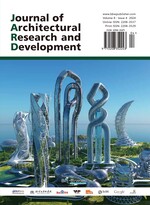Abstract
The application of self-compacting recycled concrete can solve the problem of environmental pollution caused by construction waste but its mechanical properties have not been unified and need further study. The strength of recycled concrete is unstable, and its performance still needs further study. The combination of fixed sand and stone volume method and free water cement ratio method is used to determine the mix ratio of self-compacting recycled concrete. 24 sets of slump expansion tests and 24 sets of cube axial compression tests were carried out to study the effect of recycled aggregate replacement rate on the flow performance and axial compressive strength of self-compacting recycled concrete, and the performance conversion formula of self-compacting recycled concrete was given. The results show that with the increase of the regenerated coarse aggregate substitution rate, the fluidity and filling property of the self-compacting regenerated concrete mix decreased. The failure of self-compacting recycled concrete is mainly due to the failure of strength between old mortar and new mixture. As the substitution rate increases from 0 to 100%, the axial compressive strength decreases by 15.2%.
References
Deng S, Zhang X, Luo Y, 2006, Current Situation Analysis and Research Prospect of Waste Concrete Recycling. Concrete, 2006(11): 20–24.
Xiang X, 2017, Study on Axial and Partial Mechanical Behavior of Steel Tube Self-Compacting Recycled Concrete Short Columns, thesis, Southwest Jiaotong University.
Niu J, Xu Y, Xie C, 2020, Analysis of Bond Strength Between Rebar and Recycled Concrete Based on Statistical Regression. Journal of Yangtze River Scientific Research Institute, 37(06): 156–159.
Zhang Y, Zhao Q, Li H, et al., 2016, Relationship Between Basic Working Performance and Static Stability of Self-Compacting Concrete. Journal of the Chinese Ceramics, 44(02): 261–267.
Fernando P, Alexandre V, Adriano MB, 2018, Efficient Self-Compacting Concrete with Low Cement Consumption. Journal of Cleaner Production, 2018(175): 324–332. https://doi.org/10.1016/j.jclepro.2017.12.084
Abdalhmid JM, Ashour AF, Sheehan T, 2019, Long-Term Drying Shrinkage of Self-Compacting Concrete: Experimental and Analytical Investigations. Construction and Building Materials, 2019(202): 825–837.
Nili M, Sasanipour H, Aslani F, 2019, The Effect of Fine and Coarse Recycled Aggregates on Fresh and Mechanical Properties of Self-Compacting Concrete. Materials, 12(7): 1120.
Sasanipour H, Aslani F, 2020, Durability Properties Evaluation of Self-Compacting Concrete Prepared With Waste Fine and Coarse Recycled Concrete Aggregates. Construction and Building Materials, 2020(236): 117540.
Silva YF, Delvasto S, Izquierdo S, et al., 2021, Short and Long-Term Physical and Mechanical Characterization of Self-Compacting Concrete Made with Masonry and Concrete Residue. Construction and Building Materials, 2021(312): 125382.
Wu C, Ma J, Pan Z, et al., 2015, Experimental Study on Basic Mechanical Properties of Self-Compacting Concrete with Discontinuous Graded Recycled Coarse Aggregate. Architectural Structures, 45(10): 69–73.
Wu Ch, Ma J, Pan Z, 2014, Experimental Study on Work Performance of Self-Compacting Concrete with a Discontinuous Gradation of Recycled Coarse Aggregate. Concrete, 2014(10): 109–113.
China Construction Industry Press, 2012, Technical Specification for Application of Self-Compacting Concrete, JGJ/T 283-2012.
Xiao J, Yang J, Huang Y, et al., 2011, Axial Compression Test of Recycled Concrete Restrained by Steel Tube. Journal of Building Structures, 32(6): 92–98.
Yang Y, Ma G, 2013, Bending Properties of Recycled Concrete for Stainless Steel Tubes. Journal of Dalian University of Technology, 2013(004): 572–578.
